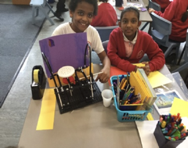Design Technology
Curriculum Intent
‘Design and technology is an inspiring, rigorous and practical subject. Using creativity and imagination, pupils design and make products that solve real and relevant problems within a variety of contexts, considering their own and others’ needs, wants and values. They acquire a broad range of subject knowledge and draw on disciplines such as mathematics, science, engineering, computing and art. Pupils learn how to take risks, becoming resourceful, innovative, enterprising and capable citizens. Through the evaluation of past and present design and technology, they develop a critical understanding of its impact on daily life and the wider world. High-quality design and technology education makes an essential contribution to the creativity, culture, wealth and well-being of the nation.’
Primary National Curriculum for Design & Technology 2014
The subject calls for pupils to become autonomous and creative problem solvers both as individuals and as members of a team. In their designing and making, pupils combine practical skills with an understanding of aesthetics, function and industrial practices. Through D&T all pupils can develop innovation and become discriminating and informed users of products.
We want children to:
- experience a relevant, challenging and enjoyable curriculum for D&T
- develop designing and making skills and technical knowledge and understanding, using a range of tools equipment and components safely
- use design and technology as a means of communication, through description, pictures, diagrams and orally
- work with a range of products and in creative problem solving both as individuals and with others
- work systematically and logically
- become understanding and discriminating consumers
The Curriculum
Early Years Foundation Stage (EYFS)
In the Early Years, pupils will experiment to create different textures and to manipulate materials to achieve a planned effect. They will construct with a purpose in mind, using a variety of resources and simple tools and techniques competently and appropriately.
Key Stage 1 (Years 1 and 2)
During Key Stage 1, pupils learn how to think imaginatively and talk about what they like and dislike when designing and making. They build on their early childhood experiences of investigating objects around them. They explore how familiar things work and talk about, draw and model their ideas. They learn how to design and construct objects safely and use D&T as part of this process.
Key Stage 2 (Years 3 to 6)
During Key Stage 2, pupils work on their own and as part of a team at a range of designing and making activities. They think about what products are used for and the needs of the people who use them. They plan what has to be done and identify what works well and what could be improved in their own and other people’s designs. They draw on knowledge and understanding from other areas of the curriculum and use computers, software (such as Scratch) and hardware (digital microscopes/ data-logging packages) in a range of ways in order to develop their ideas.
Teaching will ensure that the specific expectations of ‘knowledge and understanding’ are applied when ‘developing ideas’, ‘planning’, ‘making products’ and ‘evaluating’ them.
D&T consolidates a range of curriculum areas. It supports Literacy as children practice reading when making sense of instructions, seeking information, scanning and skimming texts, as well as reading captions and labels in design work. D&T also provides ample opportunity for the practical application of mathematics through calculations and measurements. Computing is another important part of the D&T curriculum as pupils have access to a range of related activities including those where they:
- use, draw and paint programs to model ideas
- use databases and other information sources for research
- develop their understanding of sequencing and control systems
- use digital cameras to record their work
The curriculum overview for the school is as follows:
|
|
Term 1 |
Term 2 |
Term 3 |
Term 4 |
Term 5 |
Term 6 |
|
Year 1 |
|
|
Food - Healthy eating Designing and preparing a balanced diet
|
|
|
Mechanism -sliders and movers Moving pictures
|
|
Year 2 |
|
|
|
Free standing structures Picture frames
|
|
Textiles -Joining and templates Safety jacket for teddy
|
|
Year 3 |
|
|
Construction - Weaving, joins and mechanisms Design and construct an Iron Age Hill-fort |
|
|
Food - Egyptian bread investigation Making flour and designing and baking bed |
|
Year 4 |
|
|
Mechanisms, Structures, Electrical Systems To design and prototype a stage mechanism for the Cirque du Soleil show |
|
|
|
|
Year 5 |
|
|
Mechanisms – wheels and axles and crumble control Design a powered and controlled moon buggy |
|
Food Bread making
|
|
|
Year 6 |
Design and build – CAD design Design and build a Parthenon (linked to ancient Greece) |
|
|
|
Construction, triangulation and mechanisms Build a bridge of straws
|
|
Recent Projects
Year 4 Cirque du Soleil Project
As part of Year 4's Design and Technology curriculum, the children visited the Royal Albert Hall to see the latest Cirque Du Soleil show. The children then learnt how to build their own stages with moving parts and gears.
 Year 4 worked with Rolls Royce engineers, Cirque du Soleil and The Royal Albert Hall on a design engineering project. Their brief was to design and make a prototype mechanical structure for Cirque du Soleil acrobats to perform on. In total 45 different prototypes were created by the children, all of which greatly impressed the Rolls Royce engineers. Last week, to celebrate their marvellous achievement, 6 representatives from Year 4 presented their prototypes to Rolls Royce at the Royal Albert Hall. The children's work, along with their grown-up presentation skills, amazed all who attended which included several other schools from around England.
Year 4 worked with Rolls Royce engineers, Cirque du Soleil and The Royal Albert Hall on a design engineering project. Their brief was to design and make a prototype mechanical structure for Cirque du Soleil acrobats to perform on. In total 45 different prototypes were created by the children, all of which greatly impressed the Rolls Royce engineers. Last week, to celebrate their marvellous achievement, 6 representatives from Year 4 presented their prototypes to Rolls Royce at the Royal Albert Hall. The children's work, along with their grown-up presentation skills, amazed all who attended which included several other schools from around England.
How Parents Can Help
Design and Technology is everywhere. We are surrounded by it but often don't think about how and why things are the way they are. Take a moment with your children to consider some of the everyday household items that you own which have been affected by advances in Design and Technology. How have they changed in recent years and why? If your child has a keen interest in D&T then click on the links below. This will take you to a number of webpages which will help them to develop their D&T knowledge and understanding.
Further Support And Useful Weblinks
Please find below the links to some websites you may find useful when thinking about D&T at home with your child.
Eat Happy is the initiative linked to Tesco and ‘Farm to Fork’. On this page there are many useful recipes and activities associated with food preparation. The activities are fun to do and help children to become motivated in finding out where their food comes from. https://www.eathappyproject.com/at-home/
The teaching ideas websites below provide many ideas for various design projects that you can complete with your child at home.
 Gateway Academy
Gateway Academy